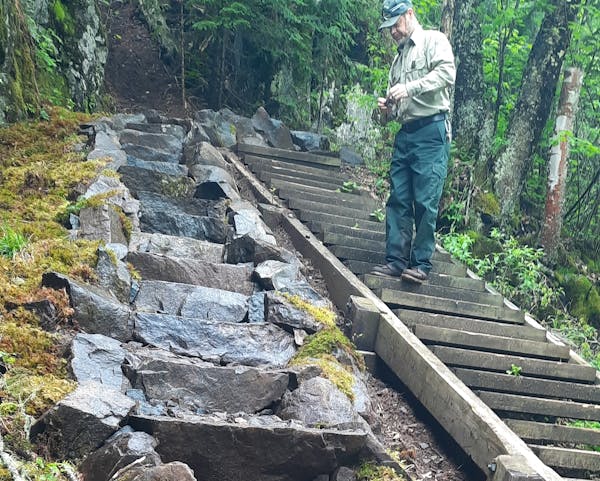State environmental regulators sued the city of Minneapolis this week to stop a landowner from building a house on a protected bluff of the Mississippi River.
The bluff is far from pristine, on a narrow wooded lot between a massive concrete plant to the south and a three-story apartment complex to the north. The proposed 1,600-foot house would be dwarfed by the concrete slabs, industrial trucks and cement mixers parked at the plant next door. Its footprint would be much smaller than the apartment complex's 40-car parking lot that stretches almost to the river.
But the Minnesota Department of Natural Resources and the National Park Service worry that allowing the small home to go up would set a bad precedent for the state's Mississippi River bluff protections, opening the door for homes, mansions and apartments to be built throughout a protected 72-mile stretch of the river. The building would also permanently alter the area, removing vegetation and habitat in "one of the few remaining bluffs in the area," the DNR argued in its lawsuit.
New structures have been banned within 40 feet of a Mississippi River bluff in Minneapolis since 1988, when Congress created a national recreation area along its shorelines.
Owner Andy Wattenhofer has been trying to build on the site since 2021. The lot, on Marshall Street about a half-mile north of the Lowry Avenue bridge, already has a duplex and a detached garage. Wattenhofer submitted construction plans to the city, showing he would keep the duplex and add a one-story home between it and the river. Wattenhofer asked the city for a variance that year, which would be needed to give him an exception to the bluff-protection rule and allow construction to go forward.
The surrounding concrete plant and apartment complex were built decades before bluff protections were put in place. In Wattenhofer's application, he argued that any damage to the bluff that the protections hoped to prevent had, essentially, already been done.
"The view from the water cannot get worse than it is today," he wrote. "It is dominated by 20′ retaining walls on the neighboring properties. And pavement on the slope has prevented tree and vegetation growth for decades."
Wattenhofer declined to be interviewed for this story.
The City Council denied Wattenhofer's request in 2021 after the DNR and National Park Service objected.
The owner resubmitted his request in the spring of 2023 to a new City Council. The proposal was almost unchanged from the one rejected two years earlier. In addition to the DNR and Park Service objections, the city planning commission denied the variance, saying Wattenhofer's property was long enough that he could add a second house on the site and still comply with the 40-foot buffer.
He appealed to the City Council in August.
DNR officials told city council members at a hearing that the project did not meet any of the needed criteria for a variance. The rules did not cause unique or undue hardship, for example, because Wattenhofer could still build on the property without harming the bluff, the agency argued.
"The variance request is being solely driven by the design preferences of the property owner," wrote Jennifer Shillcox, a land use supervisor for the DNR.
She added that if a request to build directly on top of a bluffline was approved it would be difficult for the city to ever deny another variance request in the future.
Council Member Elliott Payne, who represents the area, said in the hearing he was concerned about setting a precedent, but added that the situation was unique.
"This is complex project and I think that we need to be thoughtful about the implications of it," he said. "And we need recognize that it's a truly unique case, so whatever precedents we're concerned about setting with this about this project, it's very unique."
Payne, now the council president, didn't return phone calls and emails seeking comment.
Council members did not speak again about any of the DNR's concerns in the hearing, and voted unanimously to overturn the planning commission decision and grant the variance.
The lawsuit was filed in Hennepin County District Court. The city has not yet responded to the state's complaint.

Want to share info with the Star Tribune? How to do it securely

'Safe recovery sites' would offer syringes, naloxone and more to people using drugs. The plan could be in peril.
New Minnesota GOP leaders seek peace with party's anti-establishment wing

Who is Republican Lisa Demuth, Minnesota's first House speaker of color?

